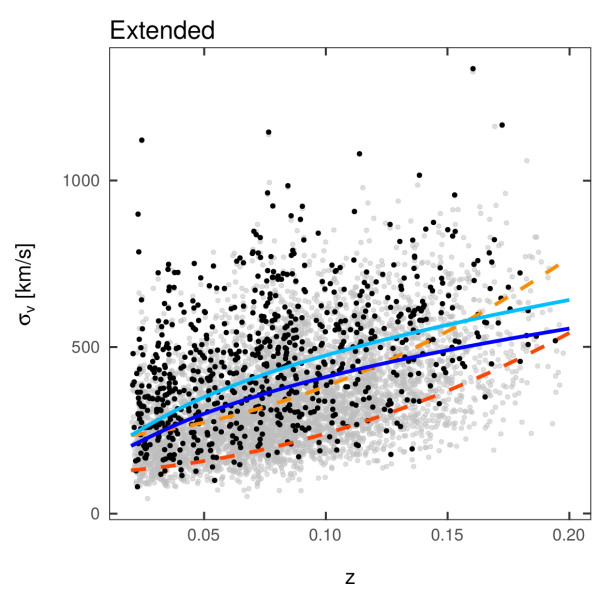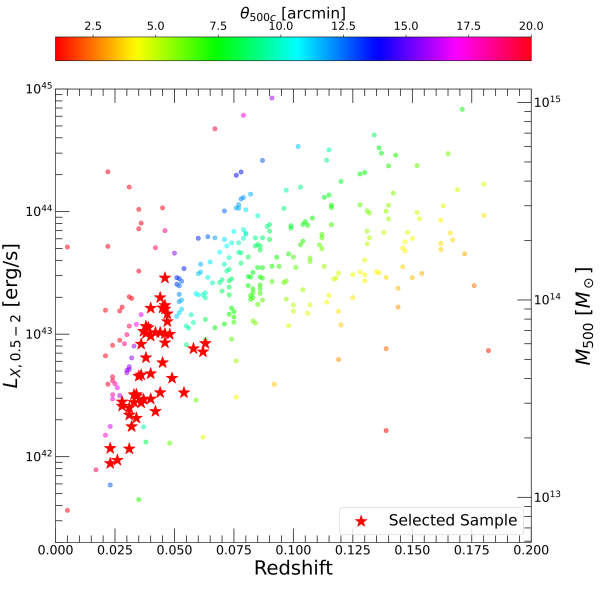Sample selection
The X-GAP sample is selected from the catalogue of Lietzen et al., which cross-correlates spectroscopic Friends-of-Friends groups from the Sloan Digital Sky Survey (Tempel et al. 2017) with extended X-ray sources selected from the ROSAT all-sky survey. Our X-ray source detection algorithm (Käfer et al. 2020) removes the central flux of X-ray point-like sources and then performs a wavelet search for core- excised extended sources on scales greater than 12′. As a result, our approach is sensitive only to large-scale X- ray emission and is not biased toward centrally-peaked systems. The properties of the sample are shown below, together with the sensitivity curves of the RASS and SDSS samples independently. At low redshifts (z < 0.1) our sensitivity is limited primarily by the RASS data, such that our selection resembles a core-excised X-ray flux selection.

-
R500 < 15 arcmin: This ensures that R500 of the selected systems is contained within the field of view of XMM-Newton
-
z<0.05 : Given the sensitivity curve of our sample, the systems located at greater redshifts are almost exclu-sively clusters with M200 > 1014 M⊙
-
Ngal > 8 : This criterion removes loosely bound galaxy systems
The final sample comprises 49 galaxy groups spanning the mass range 1013 < M500 < 1014 M⊙. The figure below shows the selected sample (red stars) in the Lx-z plane. Out of the 49 groups, 38 were never observed by modern X-ray satellites and will be followed up by XMM-Newton for the first time. The master catalogue of the sample can be downloaded here

| Attachment | Size |
|---|---|
| 25.31 KB |


